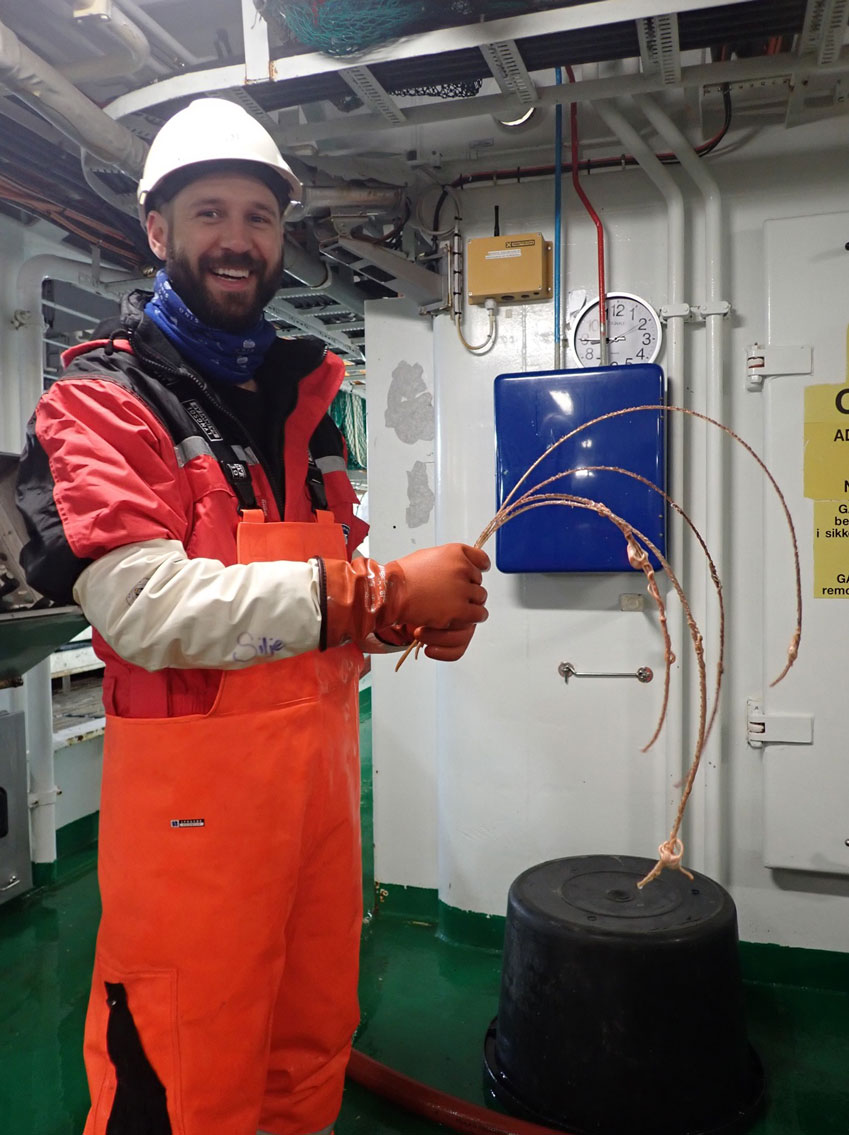
The seapen Pennatula phosphorea, 270 m depth.
Photo: Mareano / Havforskningsinstituttet
The seapen Pennatula phosphorea, 270 m depth.
Photo: Mareano / HavforskningsinstituttetPublished: 20.10.2022
The area Northwest of Utsira Island is a vast plain evenly covered by sandy mud, and here the seapens are thriving. Seapens, or sea feathers, are not single animals, but colonies of hundreds of tiny, tentacled animals called polyps. They arrange themselves into a structure that resembles an old-fashioned quill pen, or indeed a bird feather, hence the name. But they can have other shapes too.

Out here, we have found a good variety of seapen species: Funiculina quadrangularis, Kophobelemnon stelliferum, Pennatula phosphorea, and various species of Virgularia. The habitat they form has been recognized internationally as one of special concern and OSPAR has included it in its list of Threatened and/or Declining Habitats.
Due to the type of sediment on which they usually occur, which is soft and apt for digging, many types of burrowing animals live here too, such as squat lobsters and annelid worms. The burrows they create bring oxygen into the sediment, an important ecological process known as bioturbation.
Seapens are filter feeders, that is, they wait for the currents to bring small, nutritious particles to their tiny tentacles. But these interesting animals aren’t as passive as you may think. They can retract their whole bodies if they feel threatened, and sometimes this means that they disappear entirely into the sediment. So, ostriches may not bury their head in the sand as the myth goes, but seapens certainly do!